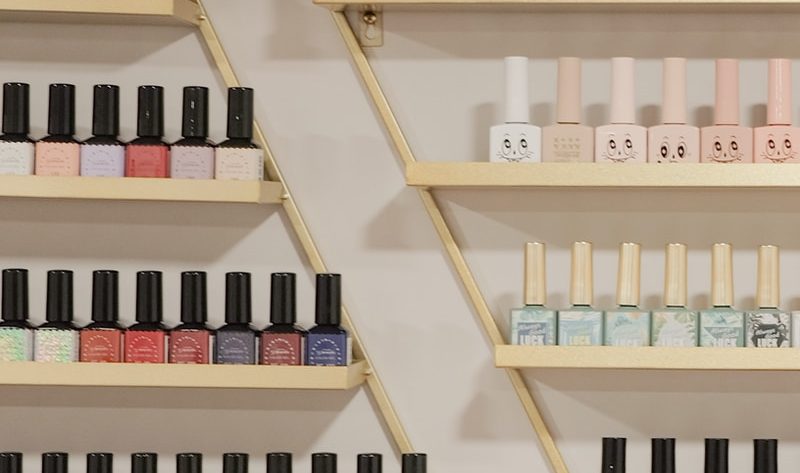Nails are the perfect accessory. Your nails can make a fashion statement, whether you’re doing a French manicure or glittery nail art. Want a manicure with staying power? Gels last for up to three weeks, and give a shiny finish that doesn’t chip or peel.
The durable gel also means that you don’t have to worry about your nails being damaged… by washing dishes. But could this be affecting your natural nails? Can nail gels harm your overall health? Here are the facts.

Gel is bad for nails?
It all depends on how you use it. Gel polish can cause damage to your nails’ natural surface. However, it is possible to get gel polish made and removed by licensed professionals from time to time without ay long-term harm.
Just watch out for these signs of damage on or around your nails:
- Dryness
- Brittleness
- Cracks and breaks
- Nail fold inflammation
- Infection
Gel is bad for nails? Let’s do some research.
A survey with 2,118 participants was the largest study to date on the side effects gel nail polish. The self-reported questionnaire revealed that almost half of respondents reported side effects when applying gel nail polish and one in five while wearing it.
Side effects that could occur when gel nail polish is applied or worn include:
- A sensation of burning and pain
- Itching
- Scaling, swelling, discoloration, swelling, redness, or dry nail folds
- Changes to the nail plate
A mere 1% of people reported having a rash on their body or hands, eczema or swelling of the lips.
Gel removal is the most common stage of damage.
In addition to side effects, 34% of people who had removed their gel manicures experienced:
- Weak nails
- Splitting nails
- White spots on the nails plates
- Grooves on the nails plates
- Changes in the color of the nail plates
- Onycholysis and nail bed separation
- Nail form changes
- Scales under the nail plate
Not all methods of removing the manicure are equally likely to cause problems. These side effects were more common when manicures were performed by participants.
Is gel bad for your health? Let’s take a look at the chemicals.
The strong chemical smell is often the first thing that strikes you when you enter a nail salon. Although not all these chemicals are harmful, gel polishes can have some potential hazards like:
- Dibutyl Phthalate (DBP) is a plasticizer that gives products greater flexibility
- Triphenylphosphate (TPHP), another common plasticizer, is suspected to be an endocrine-disrupter
- Toluene suspends the color evenly and can lead to skin irritation and inflammation
- Formaldehyde is linked to certain cancers and is used as a hardening agent
Although there is still much debate over whether these chemicals can be considered toxic, formaldehyde is especially concerning. The Environmental Protection Agency says that research associated it with certain cancers, and it can also cause .contact dermatitis, especially if you have sensitive skin.
What do these chemicals mean to your health?
Research suggests that chemicals in nail polish may leach into the body. Researchers tested 26 women who had just painted their nails in a small 2015 study. The TPHP levels in active nail painting participants increased sharply when compared to manicures with fake nails and gloves. Remember that TPHP can disrupt your hormones.

Can these harsh chemicals be avoided?
You can search for alternatives that are less toxic if you’re concerned about chemicals in gel polish. Look out for labels such as 3-, 5-, and 10-free on the packaging to see if they have eliminated that many harsh chemicals.
A company may claim that their formula is 3-free if it claims that it is free from formaldehyde and toluene. Most brands are 3-free at the moment.
The Department of Toxic Substances Control tested consumer nail products and discovered that many of them contained dibutylphthalate or toluene. Remember that just because a few toxic chemicals have been removed, it doesn’t mean all ingredients will be safe.
Are LED nail lights safe?
After you have applied gel paint to your nails, the LED lamp will glow on them for a while so that they harden and set.
The LED bulbs emit ultraviolet (UV) radiation – but think sunlight rather than Chernobyl. Exposure to UV radiation can cause skin damage, including premature wrinkles, age spots, and even skin cancer.
A 2013 study suggested that even the small amount of exposure at nail salons is not a problem. The FDA generally considers these LED nail lamps to be low-risk, provided they are used according to their instructions.
FYI: You may wish to avoid UV radiation if you are more sensitive than others (e.g., due to a medical condition).
What to expect from a gel nail appointment
Gel nails take slightly longer than regular manicures. It should take about an hour to complete gel nails. However, it all depends on how your nails are doing and if you have gel polish.
Step 1. Nail prep
Your manicurist will first prepare your nails. To prevent oils from getting on your nails, they will push back your cuticles using a hand sanitizing agent. You can use oil on your cuticles but keep it for the manicure.
They will trim your nails and shape them. Next, they will clean your nails with alcohol and a pH-balancing product. This will ensure that gel sticks.
Step 2. Base gel
Base gel is a base coating that makes the gel stick to your nails. The base gel prevents the gel’s pigments from staining your nails. This is not a good look. Depending on the instructions from the manufacturer, you’ll need to place your nails under the lamp for approximately 15 seconds.
Step 3. Step 3. Topcoats
Let’s get to the good stuff. You will usually need two coats of nail polish, each with a cure time of 30 seconds under the lamp.
To keep the color shiny and slick, a topcoat will be applied. This will be dried under the lamp.
After curing gel polishes, most leave behind a sticky dispersion layer that your nail tech can wipe off with alcohol.
Step 4. Step 4.
Ooh! You can see your nails shining like nobody’s business! Your nails will look like a brand new car and be shiny! Your manicurist will then apply cuticle oil to your nails before you go.
Avoid common gel errors
Gel nails look great, but how can you maintain them? These are the things you should avoid when wearing gel nails.
- Use cuticle oil sparingly. Healthy nails need to be flexible, and they require hydration to stay that way. Cuticle oil can dry out nails and cause them to break easily.
- You shouldn’t leave the gel on too long.
- You can leave damaged gel on your nails. Eww! If your gels are damaged, it’s better to remove them.
- Removing the gel yourself. Although it’s tempting to remove a worn-out gel manicure at home, it’s safer to get the professionals involved. You can damage your nails by being too rough with the products you use.
Less damaging alternatives
Traditional nail polish is still a good choice, even though it’s not as trendy and durable. There are many new products on the market that combine classic and gel polish with long-lasting formulas.
For a new manicure, press-on nails are a great option. No more thick, plastic-looking extensions. Today, you can apply press-on nails in a variety of designs and they last for up to one week. You can even reuse them if you don’t lose any. They’re also a great choice for nail biters.
Takeaway
Gel nails are safe and can be saved for special occasions.
If possible, look for nontoxic products. Gel nail polishes can contain chemical nasties.
You can also damage your nails if you do too many mani-pedis. You can keep your nails looking sleek by using classic nail polishes or pressing-on nails between gel manicures.




